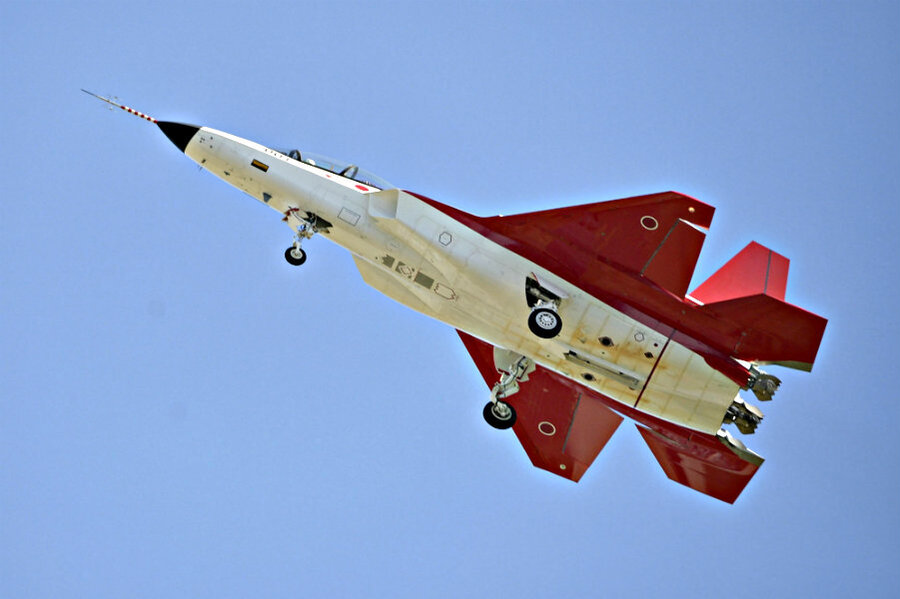Why did Japan just build a stealth fighter jet?
Loading...
Japan’s first stealth fighter jet, a prototype called the X-2, took its maiden flight on Friday.
The development of a stealth fighter jet – capable of evading radar detection – is indicative of Japan's concern over China's regional military buildup. It's also a sign that Japan is willing to move beyond its pacifist past and chart a defense independent of its closest military ally, the US.
The X-2 was built by Mitsubishi Heavy Industries, and "integrates an airframe, engines, and other advanced systems and equipment all adaptable to future fighters,” according to Mitsubishi.
According to the test pilot, the X-2’s inaugural flight went well, and followed a simulated training flight pattern. The X-2, painted red and white, took off from the Nagoya airport and landed at the Japan Air Self-Defense Force Gifu base.
Although the X-2 has been in development for over a decade, its first test flight this spring is certainly timely, as tensions escalate between Japan and near neighbor China over the situation in the East and South China Sea.
Recently, the Japanese government approved a $44 billion dollar defense budget, the fourth straight year of budget increases in a row.
The budget increase was approved alongside legislation that would make it possible for Japanese troops to fight in other countries for the first time since World War II.
"The security environment surrounding our country is increasingly severe,” said Japan’s Prime Minister, Shinzo Abe to reporters after the 2016 budget was approved. “In a world where no one nation can protect themselves by themselves alone, this legislation will help prevent wars."
Despite these recent changes, however, Japan says its soldiers may fight abroad only if the safety of both Japan and its allies are threatened.
In light of Japan’s constitutional pacifism, its decision to create a prototype stealth fighter, making it just one of four nations to have radar-evading aircraft, may seem strange.
Yet the creation of the X-2 may be indicative that Japan knows which way the wind is blowing.
In 2015, Japan’s Air Self-Defense Force had to “scramble” 571 times to respond to Chinese incursions on its air space, a 23 percent increase from 464 times the previous year.
Japan is also concerned about increasing Chinese activity in the South and East China Sea. Japan, the US, and other Asian nations are concerned about the Chinese island building and its military build up, including missile placement, in the South China Sea.
And Japan also has its own specific territorial conflict with China, over the Senkaku/Daioyu Islands in the East China Sea that similarly escalates tensions between the two countries.
With these regional stressors in mind, the Japanese creation of the X-2 prototype could be a deterrence move, as the stealth jet was built to help Japan test how to create a production model stealth fighter for the future.
Japan’s current Air Self-Defense force fleet comprises 190 elderly F-15J fighters. Given the Chinese air and island incursions in the last two years alone, Japan argues it needs to upgrade its air force.
Tokyo tried to buy F-22 Raptors – all-weather stealth tactical fighters – from the United States, but the US Congress has banned the export of F-22 technology. So, Japan is moving forward to produce its own stealth jets – and perhaps a new export.
The production model of the X-2 is expected to be named the F-3, though nobody knows yet what it will look like. The Japanese Air Self-Defense force says it plans to continue tests on the X-2 until 2018.
The full production version of the F-3 may not be seen by the public until 2030.








